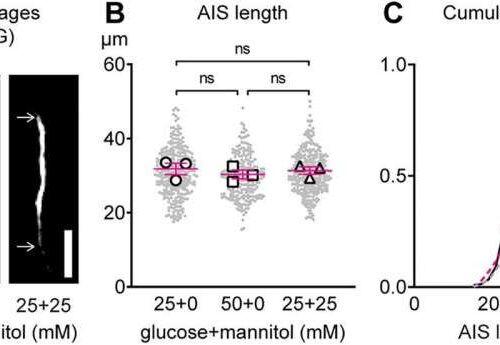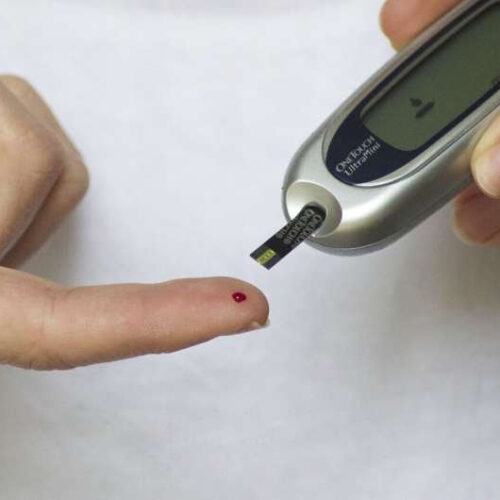Senescent cells accumulate with age throughout the body, and contribute directly to the onset and progression of a wide range of age-related conditions. While never present in large numbers in comparison to normal somatic cells, senescent cells are metabolically active, secreting signals that provoke chronic inflammation, altered cell behavior, and numerous forms of tissue dysfunction....
Category: <span>Diabetes</span>
Stem cell-based implants successfully secrete insulin in patients with type 1 diabetes
by Cell Press High-resolution model of six insulin molecules assembled in a hexamer. Credit: Isaac Yonemoto/Wikipedia Interim results from a multicenter clinical trial demonstrate insulin secretion from engrafted cells in patients with type 1 diabetes. The safety, tolerability, and efficacy of the implants, which consisted of pancreatic endoderm cells derived from human pluripotent stem cells...
A Cure for Type 1 Diabetes? For One Man, It Seems to Have Worked
Brian Shelton’s life was ruled by Type 1 diabetes. When his blood sugar plummeted, he would lose consciousness without warning. He crashed his motorcycle into a wall. He passed out in a customer’s yard while delivering mail. Following that episode, his supervisor told him to retire, after a quarter century in the Postal Service. He...
Experimental compound counters diabetic complications
by NYU Langone Health The larger, centrally located structure shown here is a glomerulus in a mouse kidney, which is known to be damaged by diabetes, as made evident by the scar tissue dyed purple in the image. The study authors show that administration of RAGE229 to diabetic mice reduced damage to the glomeruli and...
Key mediator of neuronal disruption in neurological disease identified
by Jim Hannah, Wright State University Effect of altering glucose on AIS length in mouse cortical cultures. A, Example images of the AIS after 24 h of exposure to normal culture media containing 25 mm glucose, high-glucose media containing 50 mm glucose, or normal media containing 25 mm glucose with 25 mm mannitol added as an...
Deleting dysfunctional cells alleviates diabetes
by University of Connecticut Credit: CC0 Public Domain Eliminating old, dysfunctional cells in human fat also alleviates signs of diabetes, researchers from UConn Health report. The discovery could lead to new treatments for Type 2 diabetes and other metabolic diseases. The cells in your body are constantly renewing themselves, with older cells aging and dying as...
Not all patients with type 2 diabetes receive appropriate care to prevent cardiovascular diseases
by University of Eastern Finland Credit: Pixabay/CC0 Public Domain A new study from the University of Eastern Finland finds gaps and gender differences in current type 2 diabetes management. Type 2 diabetes is often accompanied by elevated cholesterol levels, but many patients do not receive appropriate cholesterol-lowering treatment, according to the study conducted among type 2...
Which Patients With Type 2 Diabetes Need SGLT2 Inhibitors?
Agents that form the sodium-glucose cotransporter 2 inhibitor class – including canagliflozin (Invokana), dapagliflozin (Farxiga), and empagliflozin (Jardiance) – have show remarkably consistent cardiovascular efficacy and safety for treating patients with heart failure, chronic kidney disease, and higher-risk patients with type 2 diabetes. But despite an essential role now established for drugs in the SGLT2...
Study of twins finds type 2 diabetes clues in epigenetic changes
by Lund University Researcher Emma Nilsson has analysed microRNA in fat biopsies from identical twins with and without type 2 diabetes. Credit: Kennet Ruona Identical twins share the same DNA, but one twin can suffer from type 2 diabetes while the other twin does not develop the disease. A study led by Lund University in Sweden...
Low energy diets with formula meal replacements effective for weight management and remission in adults with T2D
by Diabetologia Credit: CC0 Public Domain A new study published in Diabetologia (the journal of the European Association for the Study of Diabetes [EASD]) finds that low energy diets with formula meal replacements are the most effective methods of weight management and remission in adults with type 2 diabetes (T2D), while the macronutrient content is not important to...







